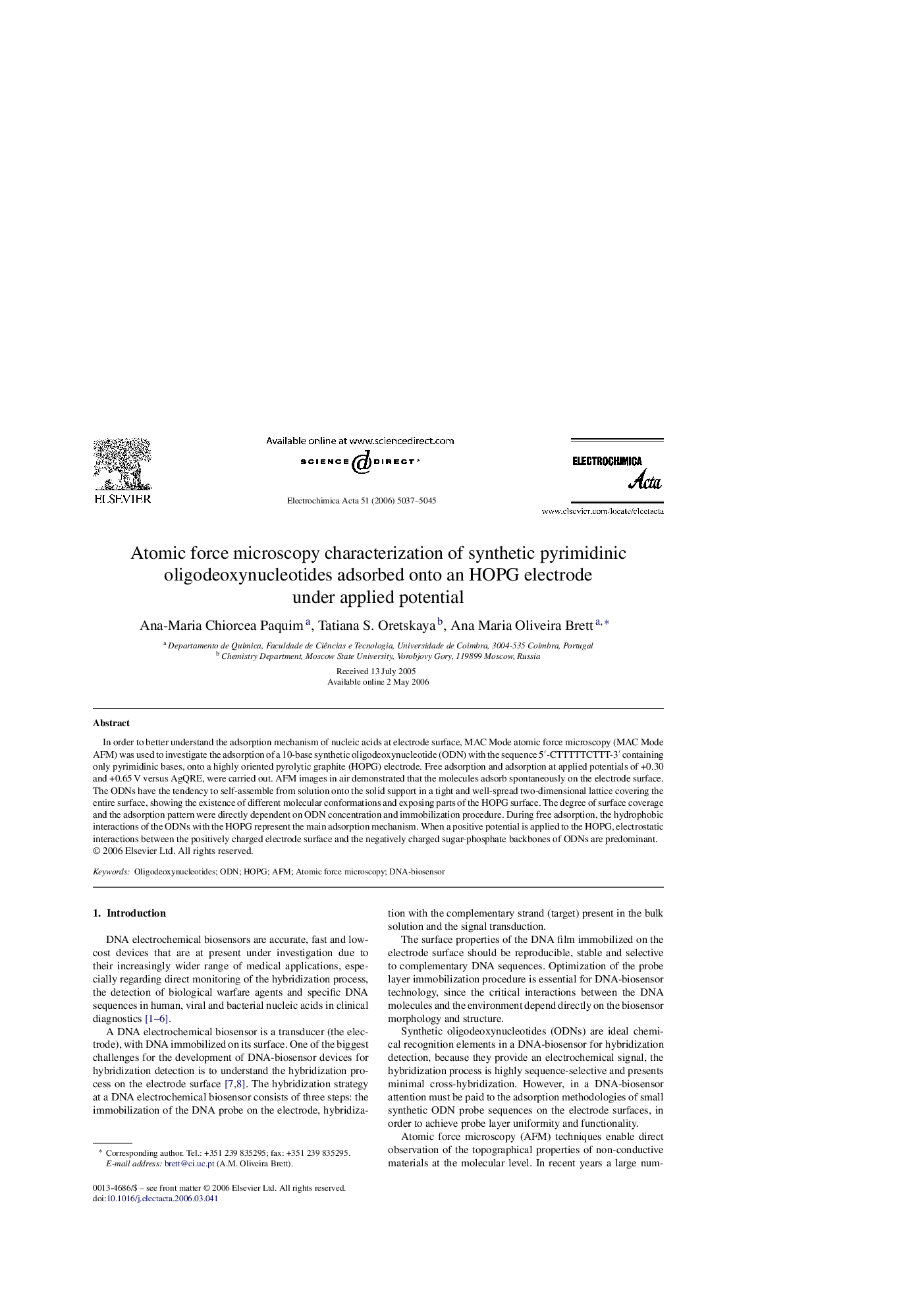| Article ID | Journal | Published Year | Pages | File Type |
|---|---|---|---|---|
| 195708 | Electrochimica Acta | 2006 | 9 Pages |
In order to better understand the adsorption mechanism of nucleic acids at electrode surface, MAC Mode atomic force microscopy (MAC Mode AFM) was used to investigate the adsorption of a 10-base synthetic oligodeoxynucleotide (ODN) with the sequence 5′-CTTTTTCTTT-3′ containing only pyrimidinic bases, onto a highly oriented pyrolytic graphite (HOPG) electrode. Free adsorption and adsorption at applied potentials of +0.30 and +0.65 V versus AgQRE, were carried out. AFM images in air demonstrated that the molecules adsorb spontaneously on the electrode surface. The ODNs have the tendency to self-assemble from solution onto the solid support in a tight and well-spread two-dimensional lattice covering the entire surface, showing the existence of different molecular conformations and exposing parts of the HOPG surface. The degree of surface coverage and the adsorption pattern were directly dependent on ODN concentration and immobilization procedure. During free adsorption, the hydrophobic interactions of the ODNs with the HOPG represent the main adsorption mechanism. When a positive potential is applied to the HOPG, electrostatic interactions between the positively charged electrode surface and the negatively charged sugar-phosphate backbones of ODNs are predominant.
